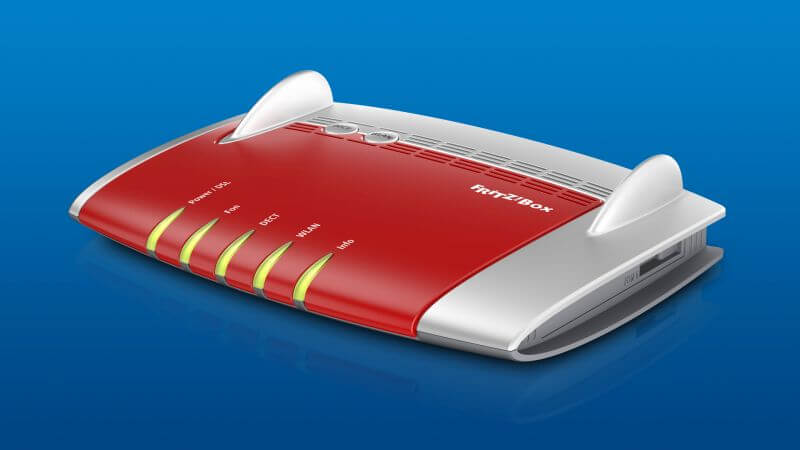The attack on 900,000 Telekom routers was impressive: Consumers should protect their routers from hacker attacks — otherwise they risk tampering, loss of data and password theft. For the particularly widespread Fritzbox router from AVM, we show you how to secure your Fritzbox — in just five steps it will be as secure as Fort Knox!
Step 1: Update firmware to the latest version
For the router to be secure, the device software (firmware) must always be at the latest version. The installation of a firmware update is done in a few minutes. For the Fritzbox, this is how you do it: Launch a browser such as Firefox. Tap in the address line “http://fritz.box”, press the Enter key and sign in (default password is “0000”).
On the router menu click on “Wizard” and “Update firmware” or “Update”. If a new firmware is available, click on “Start firmware update now”. Note: Some Internet providers such as Unitymedia and Vodafone Kabel Deutschland install updates automatically.
In this case, you will receive the error message “The specified URL was not found”.
Step 2: Activate WPA2 encryption
A door lock protects your home, an encryption system protects the home wireless network. Therefore use WPA2 in order to be safe. WPA2 works with all current PCs, notebooks, smartphones and tablets.
How to set up WPA2: Open the router interface as described in step 1 and click on “WiFi” and “Security”. If you have not already done so, select “WPA encryption”, so that the entry is highlighted in blue. Then select as the option “WPA2 (CCMP)” as “WPA mode”. “CCMP” is currently considered to be the most secure encryption method. Click on “Apply”.
Step 3: Use a secure WiFi password
A secure WiFi password should consist of at least twelve characters, better still even more characters. It is best to choose a random sequence of characters and special characters.
Easy to remember yet secure passwords can be created using phrases: For the Fritzbox something like “My Fritzbox has been connecting my devices to the Internet since 2016”.
Which gives you: “MFhbcmdttIs2016”. To change the password: In the Fritzbox menu under “Wireless” and “Security” enter your new secure password in the field “WiFi Network key”. Click on “Apply”.
You must then also specify the password in your devices that are registered with the WiFi, i.e. all computers, tablets, smartphones, Smart TVs etc.
Step 4: Ward off attacks from the Web
Hackers can attack routers from around the world at the same time over the Internet.
Often people use software errors and insecure remote access functions. Therefore, disable the network protocol UPnP in the Fritzbox when you don’t actually need it.
This is how it works: In the Fritzbox menu, first in the bottom left click on “View: Standard”: This opens the expert settings. Then click on “Home network”, “Home network overview” and “Network settings”. Disable here by deselecting the option “Allow access for applications” and confirm with “Apply”. Also, check under “Internet”, “Access”, “Port access” that the function “All of the devices in the home network may independently change port settings” is not selected.
If you do not want to access your Fritzbox remotely, it is best to deactivate the remote access. This is how it works: Navigate in the Fritzbox menu to “Internet”, “Access” and “FRITZ!Box services”. Remove the tick from in front of “Internet access to the FRITZ!Box via HTTPS is enabled” and click on “Apply”.
Step 5: Change the router password
If you haven’t already done so, change the password printed on the router label immediately.
The predefined passwords can easily be reconstructed with the technical assistance of hackers. In the Fritzbox menu, under “Overview” click in the top right on the ellipses and select “Change password”.
As with the WiFi password, the router password should also contain at least twelve characters. If you have set a new password, click on “OK”.
Item image: Press photo from AVM.













